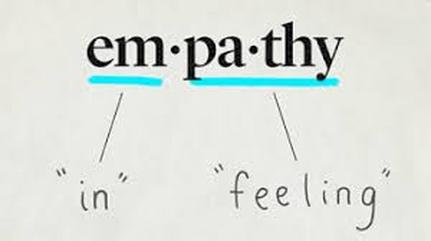Becoming a more effective leader of people starts with being more personable.Leadership is a hot topic but what makes someone a leader? The role of leadership can be assumed, assigned or affirmed. Learning to execute as a person in a position of leadership is key to success. Managing people is more effective when you are personable. Whether you are at the executive level, middle management or just starting your career, our PIAPOL concepts will help you navigate your course. Break away from empty leadership talkWhen speaking of leadership things, we often sink into the same shallow waters of platitudes. How many times can you hear the same words said in the same way with the same lackluster results? The truth is that those in leadership have to adapt to their environment. When we place leadership on a pedestal we invite myth and dysfunction. Steps towards more effective leadershipBecoming a more effective leader starts with:
Being more personable will elevate your leadershipBy understanding that leadership is not an exclusive club, rather there are only People In A Position of Leadership (P-I-A-P-O-L), we can better approach these roles and responsibilities.
Enjoy the video above and find more on these topics:
🥋 @thedyojo - Build a culture that thrives on clarity, consistency & accountability. 💼 The Do Your Job Dojo (DYOJO)
1 Comment
What is the importance of listening? Is there a tool that is more effective for those in a position of leadership (PIAPOL) to engage their employees, develop their teams and communicate value than by simply listening? More on this in our article on the importance of listening to creating a good working environment (HERE). Creating a good working environment is not an easy task but it should be the goal for any company that wants to remain competitive in the current market where finding good people is often more difficult than finding good customers. Insights from Lola will help you as a leader, an employee and as a peer. Your personal development is in your hands, get motivated and get moving forward.
Read and see more 👉 Listening, you can also view our leadership fable on listening (HERE). Kids As Managers (playlist) break core principles down into their functional truth and provides insights that are simple yet deep. More to come in series Questions With Lola. Video by IZ.Media Music Summer Out In Cali by Wordsplayed from the album Clowntown  "If we don't battle to the death, they will kill us both" "If we don't battle to the death, they will kill us both" Originally published as The Cause, Cost and Countermeasure to Conflict in an Organization in The Project Management Times By Jon Isaacson If you have dysfunction in your team, the cost may be higher than you want to admit but the cure may also be closer than you realize. Frustration in the workplace, does such a thing exist? In a recent article in Forbes magazine, researchers discussed the primary sources of disgruntlement within organizations. According to the study, most employees noted that they were frustrated by personality differences and incompetence in their co-workers. This is not news to anyone who has worked in an organizational setting, one human plus one human will eventually equal conflict. The potential for conflict, as well as the intensity and duration, are compounded by the number of humans added to the equation. More people, more problems. What is interesting about the Forbes article is that upon further investigation there was an underlying source which contributed to the environment of dysfunction, “In fact, teams having conflict had much higher levels of ambiguity in three categories of work: their team’s goals, roles, and procedures. So, while it is very human to assign personal motive and blame in times of trouble, there isn’t really anything personal about the core of workplace conflict. If you back up and look at the facts, a lack of clarity is what’s truly to blame.” (Wakeman, 2015) The need for clarity is foundational to functionality and trust within an organization. Where there is a lack of clarity, there will be conflict. Office drama is costly, CPP Inc. performed a study in 2008 which discovered that employees in the United States spent 2.8 hours per week dealing with conflict which CPP estimated as costing over $359 billion in paid hours or the equivalent of 385 million working days (Lawler, 2010). Every business understands the need to watch the bottom line, so why are mangers unwilling to recognize the high cost of conflict? Think of it, if every employee in your office could increase engagement and efficiency by 7% by only changing one element, wouldn’t that be something a wise leader would be more intentional about? Recognize the cost of inaction. Managers spend much of their time putting out fires, and yet our discussion to this point has demonstrated that the cure for dysfunction may be closer that you think. By understanding the cost of conflict, we recognize the value of investing in practices that will help our organization to identify and address these hot beds of discordance within our teams. Realize the need to eliminate the blame game. When employees focus on blaming each other, too often managers are happy to allow them to target their ire upon each other rather than dealing with the core of these issues which creates a negatively recurring cycle. As noted by the author in a prior article - how leaders respond to conflicts can either reinforce cultural values that strengthen the team, or they can respond in ways that destroy morale (Isaacson, 2016). Reduce conflict by creating clarity. If the research from Wakeman and her team as outlined in Forbes is accurate, then leaders can make a significant reduction in interpersonal conflict by being more intentional about organizational clarity. As a leader, you can alleviate friction between team members by being more clear about team goals, roles, and procedures as quoted above. If we can sense the frustration in the organization and we can calculate the deep costs, we should be proactive in working towards long-term solutions. Often inaction is caused by an inability to identify the causes or formulate an effective plan, but now that these have been brought to light the only question left is whether we will be intentional about getting into the mix to make the magic happen. There are no shortcuts when working with interpersonal dynamics but progress is attainable through the countermeasures for the conflict we have discussed. References Wakeman, Cy (2015, June 22) The number 1 source of workplace conflict, and how to avoid it. Forbes. Retrieved fromhttp://www.forbes.com/sites/cywakeman/2015/06/22/the-1-source-of-workplace-conflict-and-how-to-avoid-it/#32a27f89126e Lawler, Jennifer (2010, June 21) The real cost of workplace conflict. Entrepreneur. Retrieved fromhttps://www.entrepreneur.com/article/207196 Isaacson, Jon (2016, July 11) Eliminating blame in your organization. Retrieved from http://izvents.weebly.com/words/eliminating-blame-in-your-organization  How can empathy strengthen leadership? How can empathy strengthen leadership? Originally published as How To Lead With Empathy May 4, 2017 by About Leaders By Jon Isaacson In all of the various words expended on business, entrepreneurship, and leadership, there are few that discuss the role of empathy as a key to the development of emotional intelligence. Feelings are a component of life. But they are often treated as though they have no place in a professional organization and are of no concern for the successful leader. The truth is that most people in leadership positions make decisions based on feelings, whether they are willing to admit that or not. A recent study entitled Only Human conducted by Gyro surveyed 720 senior business executives and noted that, “A majority (61%) of executives agree that when making decisions, human insights must precede hard analytics.” Life is theater, business is full of drama, and people are sensitive. So how do modern leaders elevate their emotional intelligence to address these realities in an organizational environment, especially if they are working to flatten out the organizational chart? Empathy is defined as the ability to understand and share the feelings of another. Empathy is what separates emotionally intelligent leaders from managerial programmed robots who are following a passionless script. Consideration and Engagement Consider the engagement equity in the ability to understand what someone is feeling, to comprehend the perspective of another human and engage with them, whether you agree or disagree with their conclusions. Consideration for others’ feelings, compassion for their trials as humans, and caring when addressing sensitive issues at work are essential soft skills that can elevate a leader to inspire others to buy-in to the organizational vision. We know in principle that empathy is a form of understanding. So we should understand what empathy is as well as what it isn’t. What is Empathy? Empathy is listening to others, attempting to see things from their perspective, and making leadership decisions based upon a fuller engagement with team members who can help in accomplishing the mission. Empathy is a skill that must be developed as an essential component in the tool belt of emotional intelligence. This can assist a leader to more successfully work through periods of resistance while working with other individuals. Empathy is not capitulation. Listening and understanding does not mean that a leader changes course simply because there are individual(s) who respond negatively to directions and changes within the organization. Empathy is not appeasement. Acquiring perspective does not mean that a leader will seek the path of least resistance by sacrificing long-term success for short-term peace acquired by cowering to demands. Humanizing Employees, co-workers and business partners come in all emotional shapes, sizes and shades of complexity. Developing leadership soft skills and emotional intelligence is a process that requires consistent intentionality, which often includes making a fair share of mistakes. The beautiful side to humanizing the organizational process is that where empathy is practiced and modeled by leadership, it is more likely to be reflected in the interactions throughout the team. When leaders listen, empathize, and demonstrate a hunger to ever improve themselves, they tend to attract team members with the same values who will assist them to build an organization of vision. As noted, empathy does not make a leader a door mat whom capitulates to negative forces. Conflict resolution by temporary appeasement in the face of resistance is the opposite of emotional intelligence. Leaders who listen so that they can understand their teams will unlock the resources that may be hiding within their organization that would otherwise remain hidden under the misguided actions of cut and paste management principles. Step out of your comfort zone, make some smart mistakes, build a thriving team and be the leader that your team deserves. If you are resistant to change as well as growing as a leader, you will continue to attract and manage the team that you deserve. |
AuthorThoughts on personal and professional development. Jon Isaacson, The Intentional Restorer, is a contractor, author, and host of The DYOJO Podcast. The goal of The DYOJO is to help growth-minded restoration professionals shorten their DANG learning curve for personal and professional development. You can watch The DYOJO Podcast on YouTube on Thursdays or listen on your favorite podcast platform.
Archives
March 2023
Categories
All
<script type="text/javascript" src="//downloads.mailchimp.com/js/signup-forms/popup/unique-methods/embed.js" data-dojo-config="usePlainJson: true, isDebug: false"></script><script type="text/javascript">window.dojoRequire(["mojo/signup-forms/Loader"], function(L) { L.start({"baseUrl":"mc.us5.list-manage.com","uuid":"b9016446bd3c6a9f0bd835d4e","lid":"83282ffb9e","uniqueMethods":true}) })</script>
|
Jon Isaacson |
Connect. Collaborate. Conquer.
© COPYRIGHT 2015. ALL RIGHTS RESERVED.
|




 RSS Feed
RSS Feed